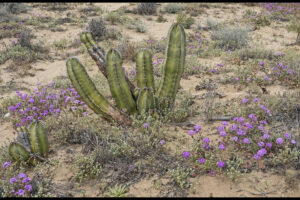 escape in mid-February by reliving our previous marvelous trip to Baja CA. Returning 3 years later and slightly later in the season, I guess we should have expected things might be different. Weather, for one, is always unpredictable. Baja is known for scant and unreliable rain, so we dreamed of clear hot days and cool nights. Wrong. However, it’s hard to whine about cloudy days in the 70’s when we froze on the way down (a slight exaggeration, it was only 0 degrees!) camping near Trinidad, CO.
escape in mid-February by reliving our previous marvelous trip to Baja CA. Returning 3 years later and slightly later in the season, I guess we should have expected things might be different. Weather, for one, is always unpredictable. Baja is known for scant and unreliable rain, so we dreamed of clear hot days and cool nights. Wrong. However, it’s hard to whine about cloudy days in the 70’s when we froze on the way down (a slight exaggeration, it was only 0 degrees!) camping near Trinidad, CO.
Baja was having a particularly rainy March, although it was obvious from the vegetation that it had been a dry winter. We managed to avoid most of the rain, but could tell by the huge puddles along the roadside that rains had preceded us. Apparently the soil is full of clay, because puddles don’t drain easily. Counter-intuitive for a sandy desert.
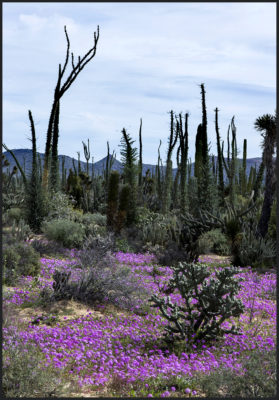
Super bloom of 2017
I thought the rains would produce the super bloom carpets of verbena from our previous adventure, but that was not to be. There were many flowers: different ones, and great displays along the road verges in some places.
One of the wonderful things about Baja is the variety of cactus and other arid-adapted vegetation. The desert is endlessly entertaining if you like weird plants. Other wonderful things about Baja are the long, lonely coastal areas on the Pacific and the Sea of Cortez (or the Gulf of California), many accessible only by boat. I doubt there are any such stretches of deserted coastal areas anywhere else in the populated world.
While the COVID19 gathered strength in the states we were mostly oblivious. Camping on deserted beaches and unpopulated areas of the desert, we didn’t bother to read the news often. What follows in this and the next blog is a pictorial visit to Baja California.
Because we spent 10 weeks in Baja in 2017, we already had some favorite camp sites. Our first is outside San Felipe, a short drive away from the border insanity.
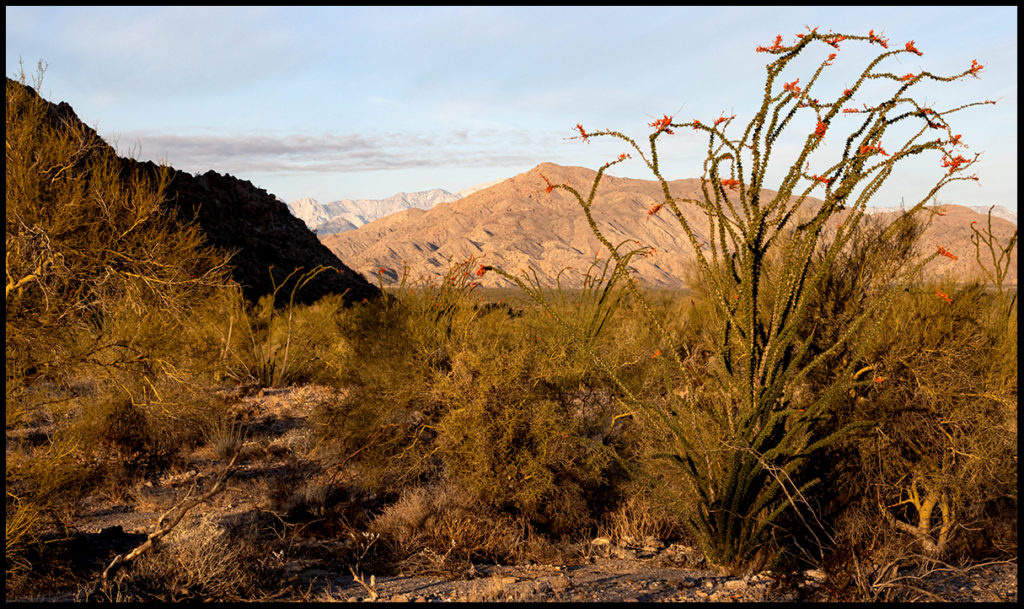
Tallest point in Baja is Pico del Diablo at 3100 meters (10,171′), visible from our camp.
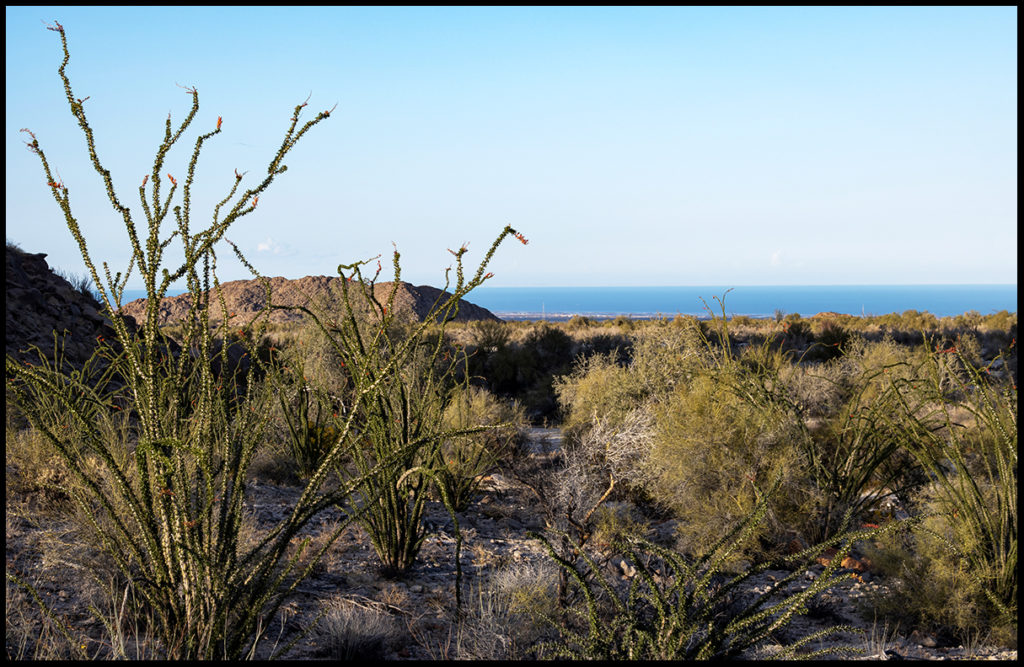
Turn the other direction and one can see the Sea of Cortez. (Ocotillo plant in foreground.)
Heading south it isn’t long before one enters the Valle de los Cirios (literally valley of the church candles). We call these odd relatives of ocotillo, boojums. Godfrey Sykes, of the Desert laboratory in Tucson picked that name years ago from Lewis Carroll’s poem “The hunting of the Snark”. And it stuck.
Here huge cardón cacti replace their more northerly saguaro relatives. Boojums and cardóns can easily grow over 50′ tall.

Single boojum. They grow only a few inches a year.
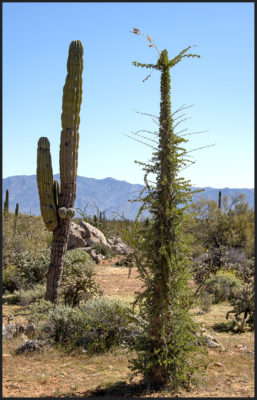
Cardón cactus with a boojum buddy.
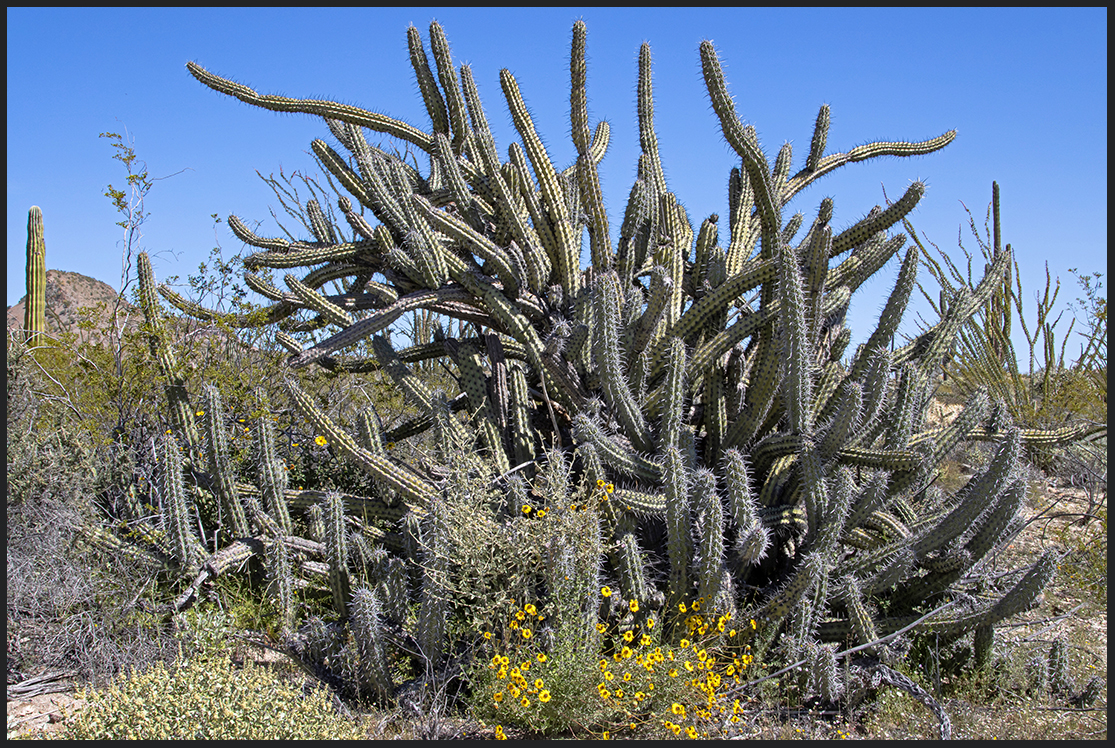
One of hundreds cactus varieties.
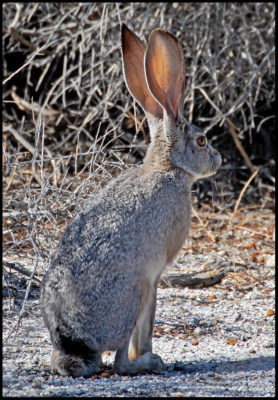
Black-tailed Jackrabbit. Visible wildlife is scarce. Most is nocturnal.

Flowers under the cactus.

Wax plant flower.

Wax Plants synthesize through the stems.
But the biggest draw for this trip was to see the Gray whales before they left their three nursery bays on the Pacific coast of Baja for the colder, more nutritious waters to the north. We chose Puerto López Mateus for whale viewing. It’s on a narrow part of the Magdalena Bay which offers a good chance to see the whales. Last time we saw many male whales at Guerrero Negro, but I wanted to see baby whales with their mothers. We weren’t too late, there were lots of whales left the first week of March.
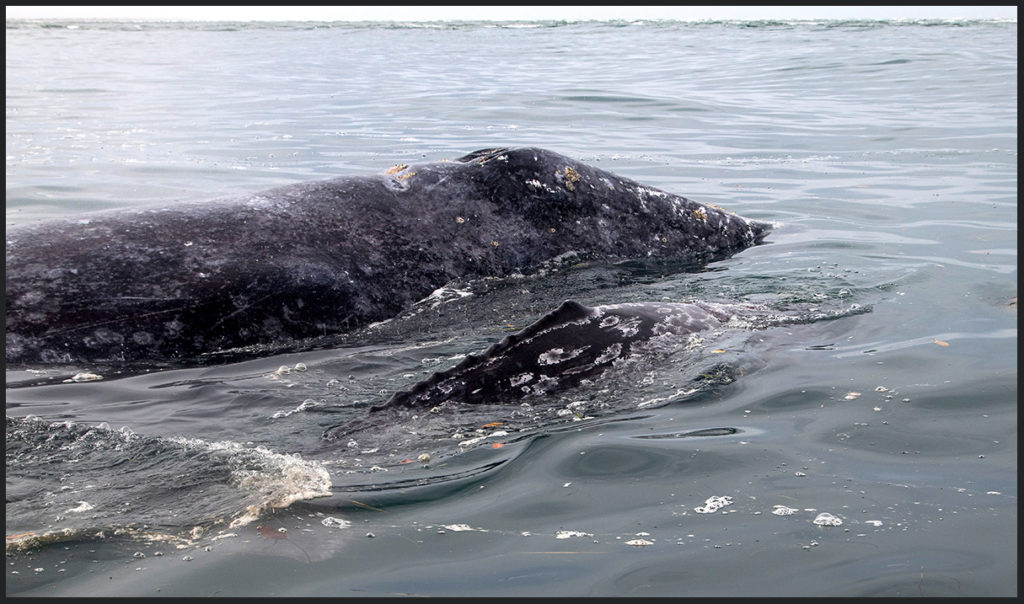
Mother and baby swim together. Even baby whales are very large.

The babies come right up to the boat to have their noses patted.

Across the bay is a long sand spit loaded with sea birds.

Whimbrels and two Marbled Godwits.
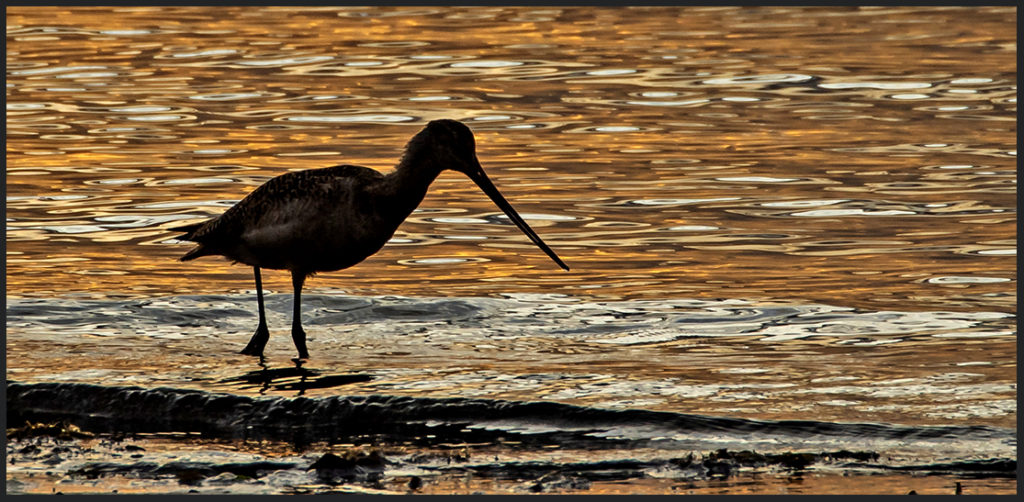
Godwit hunting for a last tidbit before bedtime.
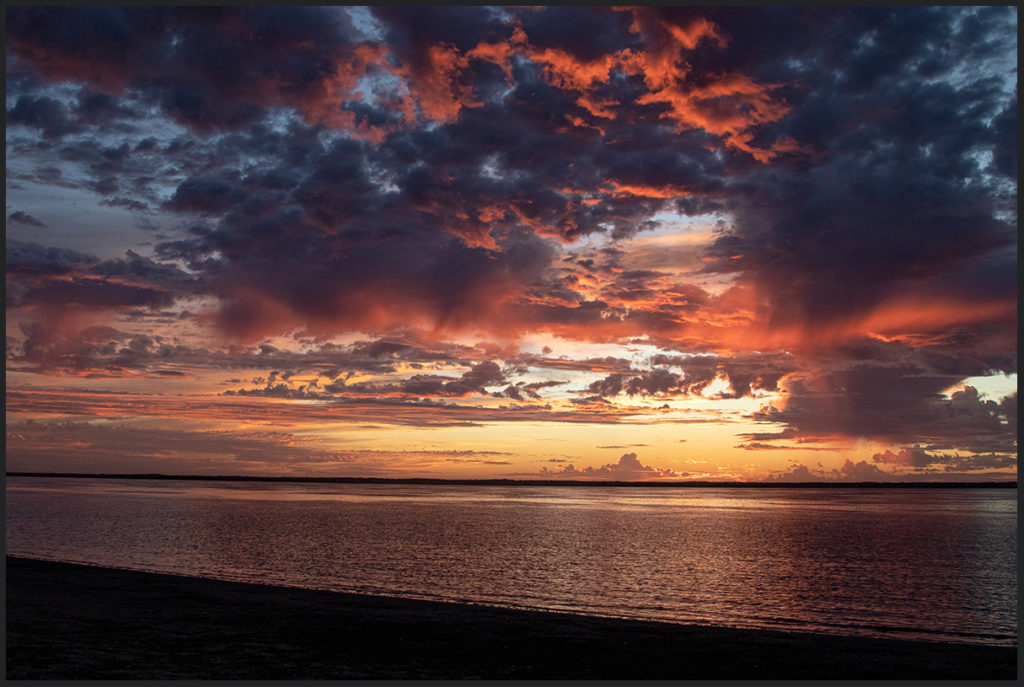
And now it’s bedtime on the bay.
Scuttled across the peninsula to La Paz and stayed at the Aquamarine RV park withing walking distance of the famed malacón. We stayed here last time and the aging proprietress was a wealth of local lore. Unfortunately, although still alive, her mind is no longer sharp.

The sign along the malecón that everyone has to have a selfie with.

Egret fishing.
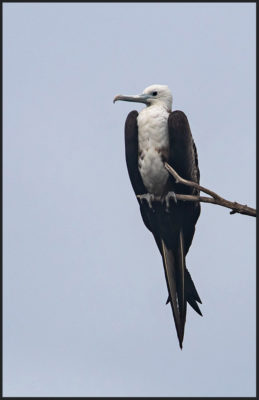
Magnificent frigatebird, juvenile

Young pelican landing. Along the coasts there’s a lot more wildlife activity than in the desert.
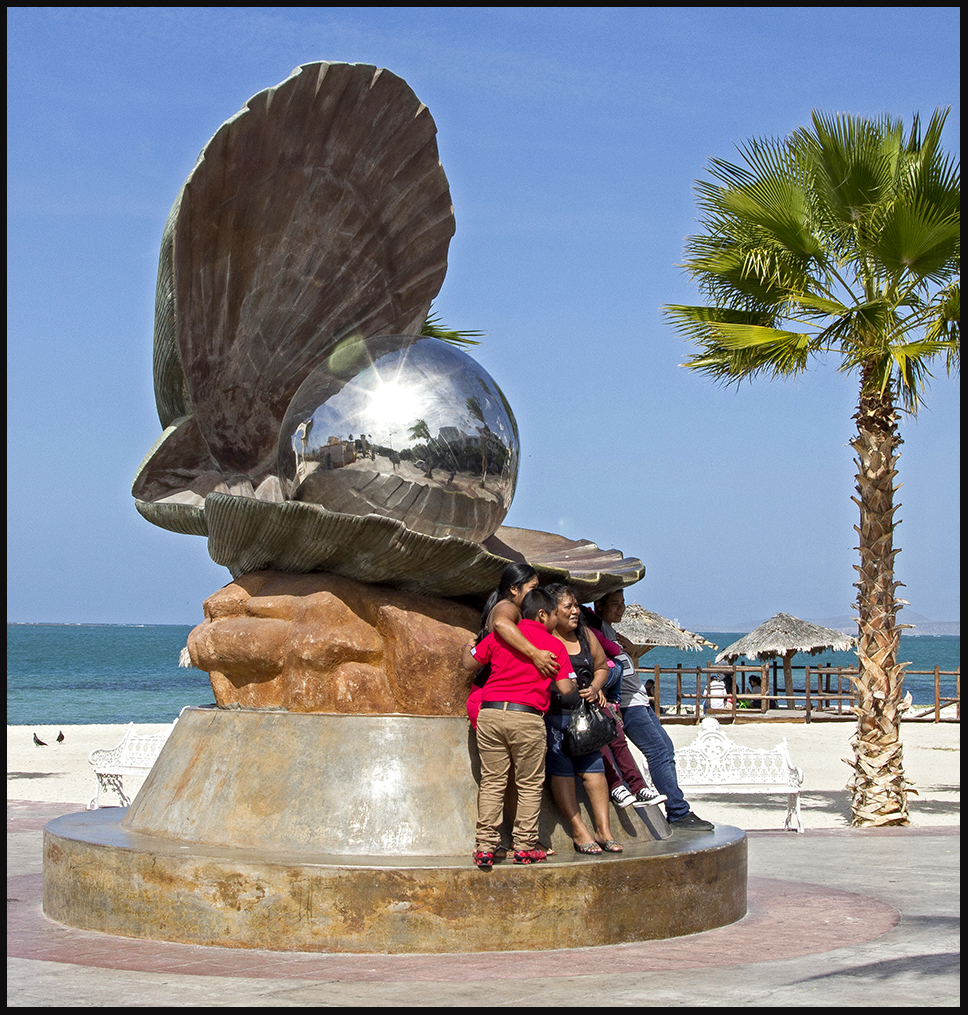
Black pearl sculpture pays tribute to the black pearl trade that began in the 16th century and continued into the 20th.

At the black pearl is where I took our selfie.
The malecón is lined with imaginative sculptures celebrating the various historic accomplishments as well as the activities available in the surrounding area.


This is a new one added since we were last here. Swimming with the whale sharks is a big draw. Even though the whale sharks are only juveniles, they are still quite an impressive size.

This wall art was here 3 years ago….

This is the same wall now.

I loved this monk parakeet nest because it looks like a gruesome mask.
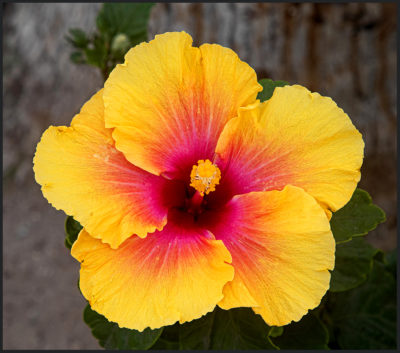
Flowers are everywhere in the cities.
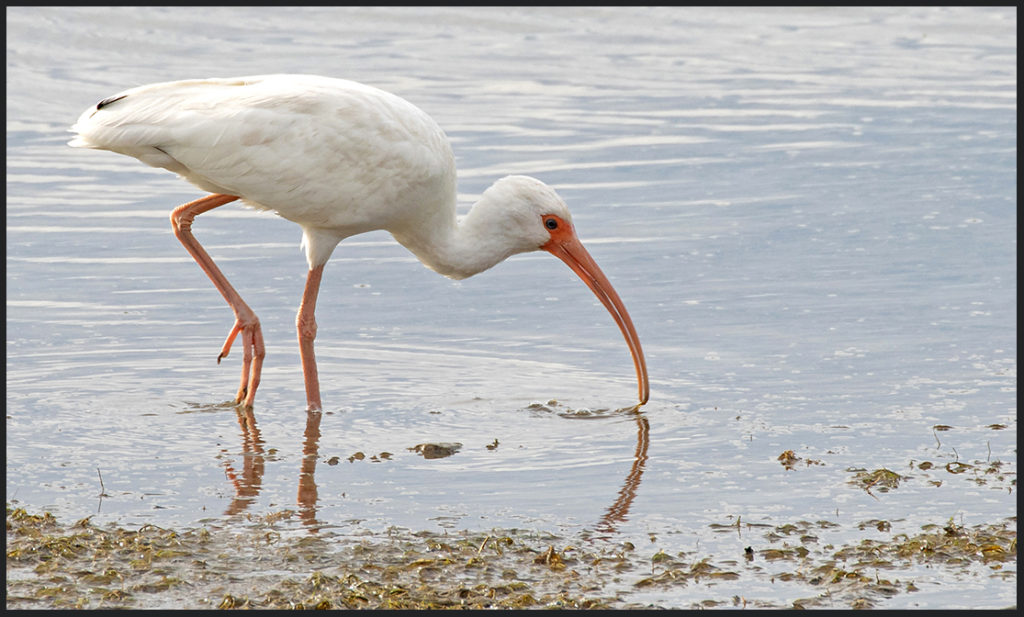
White ibis are common in Baja. I’ll add a little video of this one at the end.

While the tourist trade is big in La Paz, don’t forget it’s a port city of over a million people. Fishing is still a major business.
We soon left for free camping at Tecalote, a beach area north of town. Kayaked around the point to Balandra Bay, apparently now everyone’s favorite beach. It was crowded even though the weather was cool, windy and overcast. On a hot day it must be a zoo even during the week. We did kayak into our previous mangrove hideaway, but didn’t find the diversity of bird life we had before. Still, it is a lovely area.
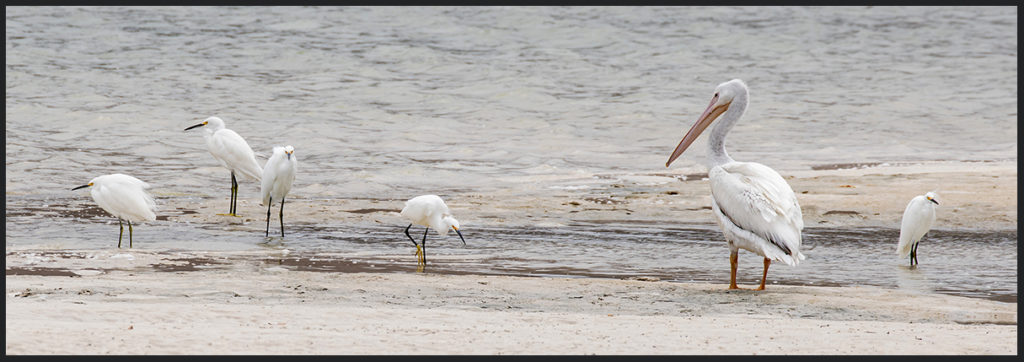
Snowy egrets with White Pelican
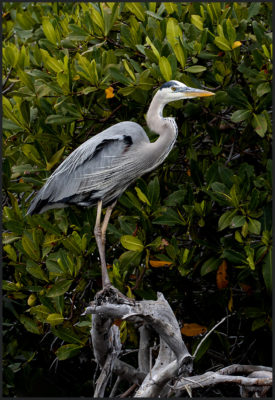
Mangrove channel guard.

Black-capped Night Heron unimpressed by the kayak.

Balandra Bay on a cloudy day.
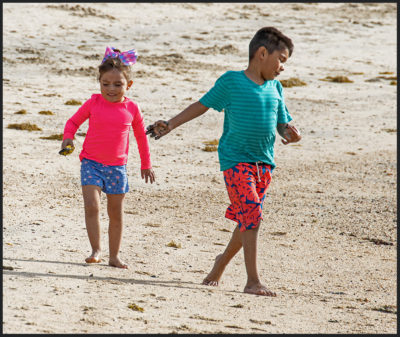
Beach goers
With only a month to drive to Baja and back to Colorado, we didn’t have much choice but to turn north again. We wanted to visit places we hadn’t been before. The inland mission of San Luis Gonzaga, founded in 1740, beckoned. The dirt road in passes many ranches. It’s interesting to see how rural people live. From our roadside perspective, it looks pretty good. The cattle having eaten most of the ground cover, but the people themselves look healthy enough. We camped off the road near one of thousands of roadside shrines to the Virgin Mary.

A large gopher snake making a get-away; the only snake we saw.

Beautiful cactus near our campsite.
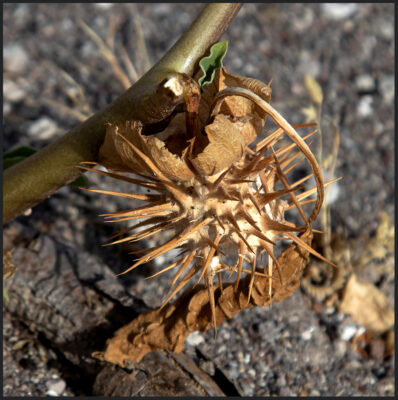
A not-so-beautiful plant at the camp.
The next morning we drove the last few miles to the mission. Rather a shock after some of the others we’ve seen. It’s a crumbling relic, with no money to keep it alive. A few scattered houses are occupied as well as a few rooms in the original administrative building. The church itself is stark, perhaps still used by a few locals on occasion. To paraphrase a sign outside the church: With the expulsion of the Jesuits in 1768 a visiting judge turned this mission into private property and gave it to the soldier Felipe Romero who started a cattle operation. A small channel web used to irrigate citrus, figs, sugar cane and grapes (I’d add dates) still remains. “The region is today inhabited by many of the descendants of the first settlers who served the mission. They remain here as a triumph over adversity.” Looking at the town now I’d have to question that last statement.
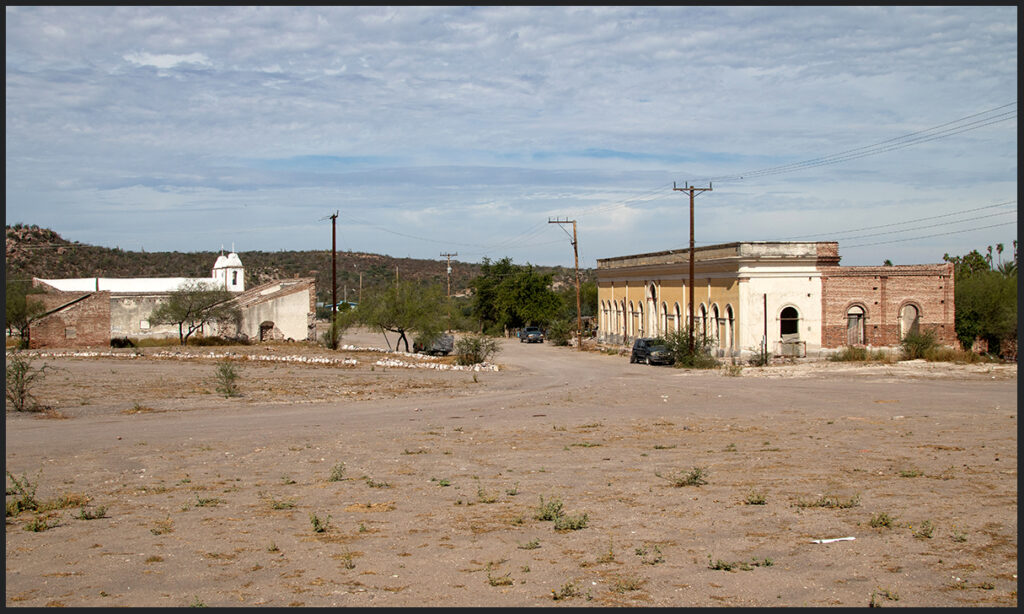
A less than impressive introduction to the mission.
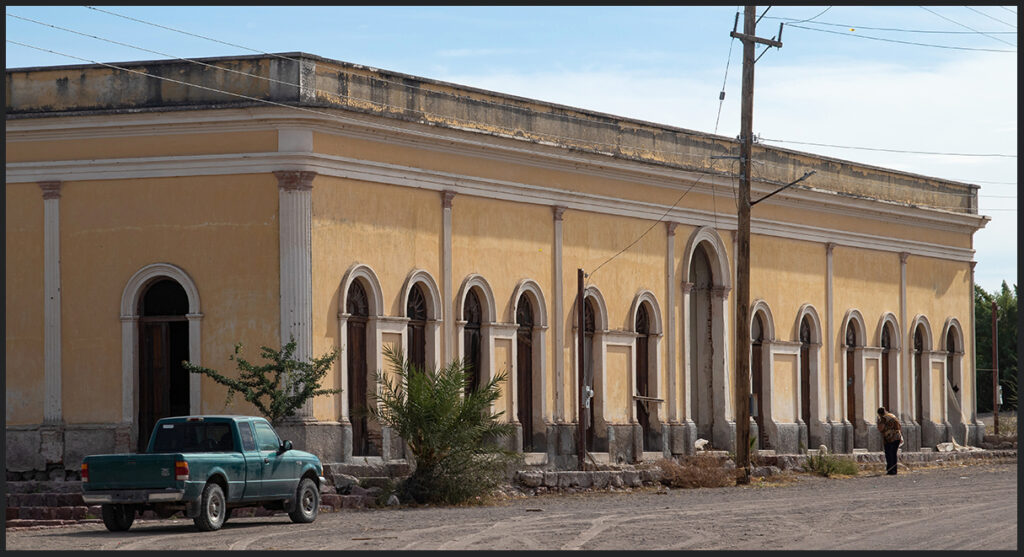
The original administration building built later than the church.

Mission church of San Luis Gonzaga has unusual twin bell towers.
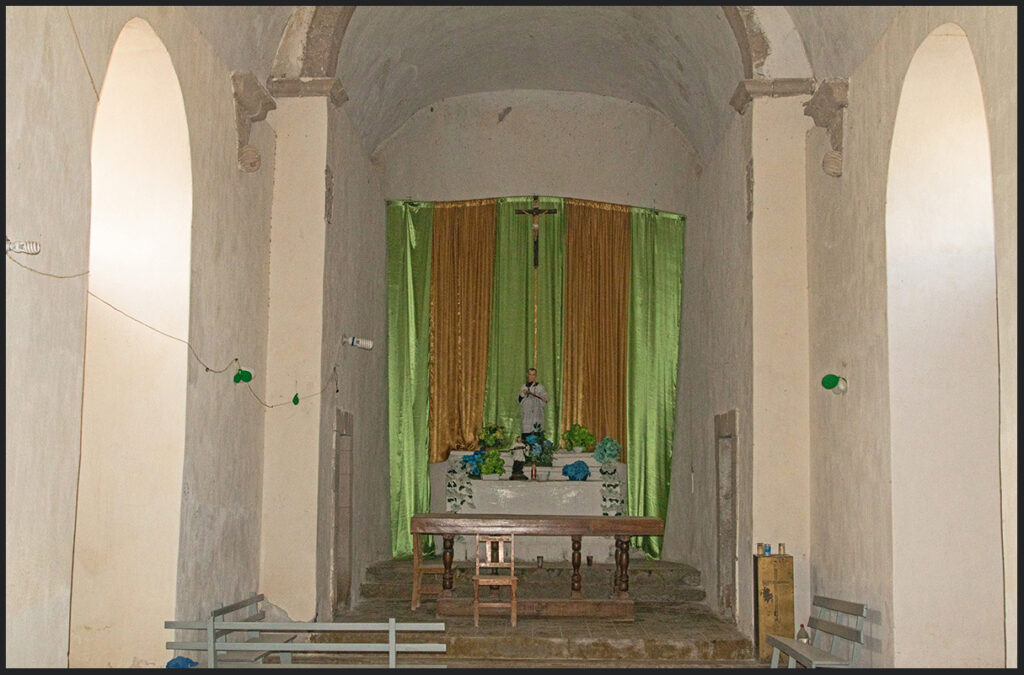
Altar area of church.
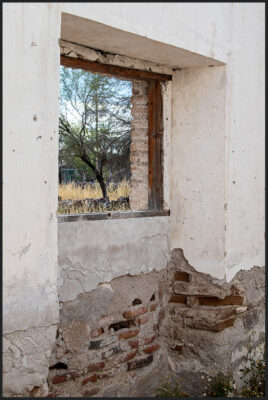
Looking out the clerical living area.
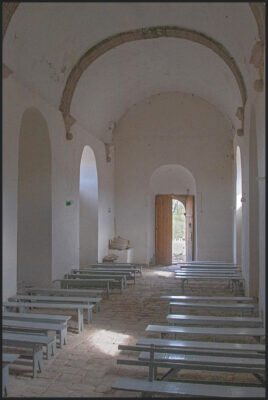
Stark church interior. Pews don’t even have back rests!
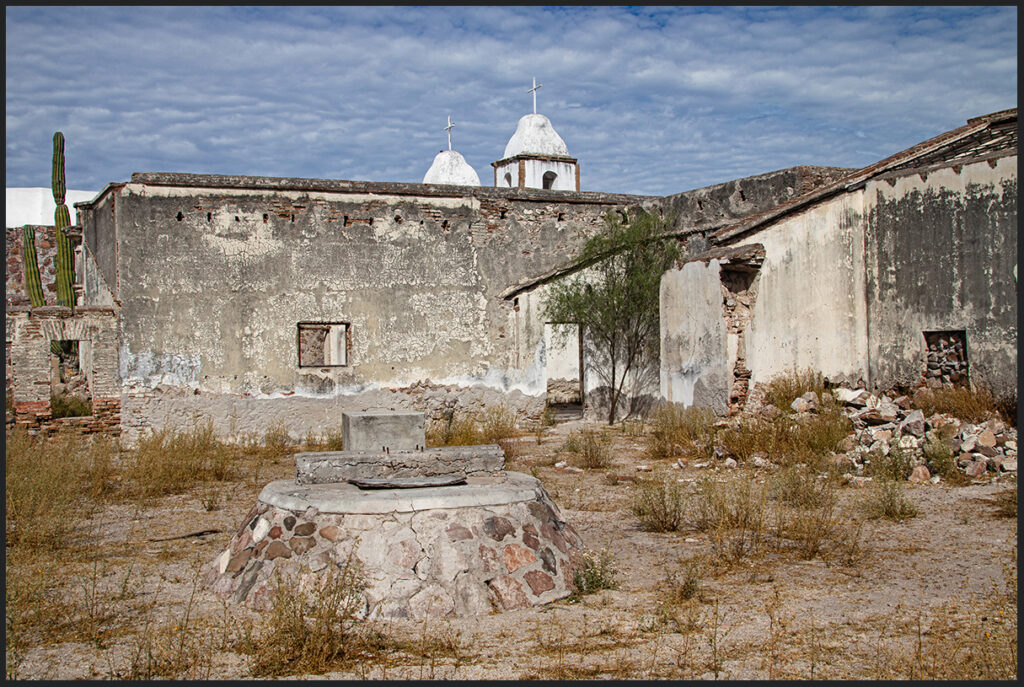
The original courtyard with water well.
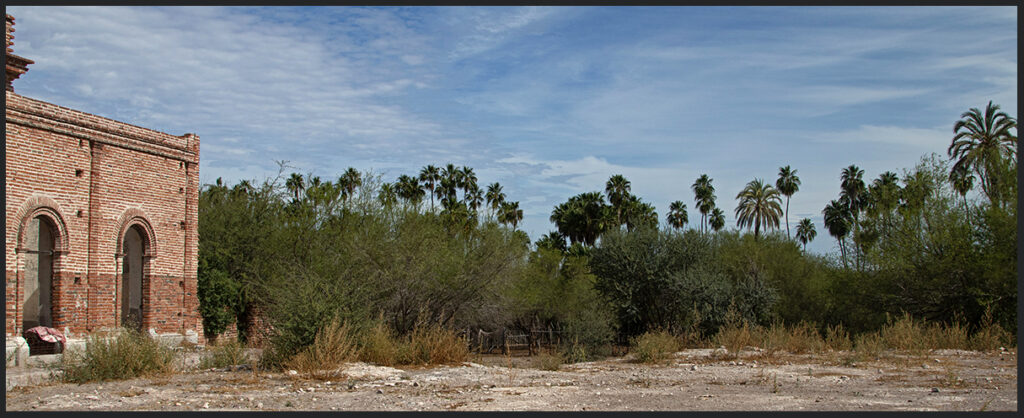
What’s left of the irrigated fields. Date palms still thrive.

An occupied house.
Back to the gulf coast to see an area previously accessible mainly by boat. Someone is trying to turn it into a grand tourist destination, but when we were there the hotel was empty. A very small enclave at the bottom of the hill services the few tourists who do manage to drive in the incredibly steep and bumpy access road. The road off the main highway is impressively paved, but soon turns to less than impressive pavement before disintegrating into a rough dirt road.
It’s obvious the peninsula was once very tectonically active. The San Andreas fault runs under the Sea of Cortez. Mainland Mexico rides the North American Plate while Baja rides the Pacific Plate. High, nearly naked, steep granite and basalt mountains jut out of the narrow peninsula, some out of the sea itself.

First view of the gulf on the way to Puerto Verde. To the right in the photo there is a lagoon blocked from the gulf by a natural stone beach causeway. We camped just to the north of that.
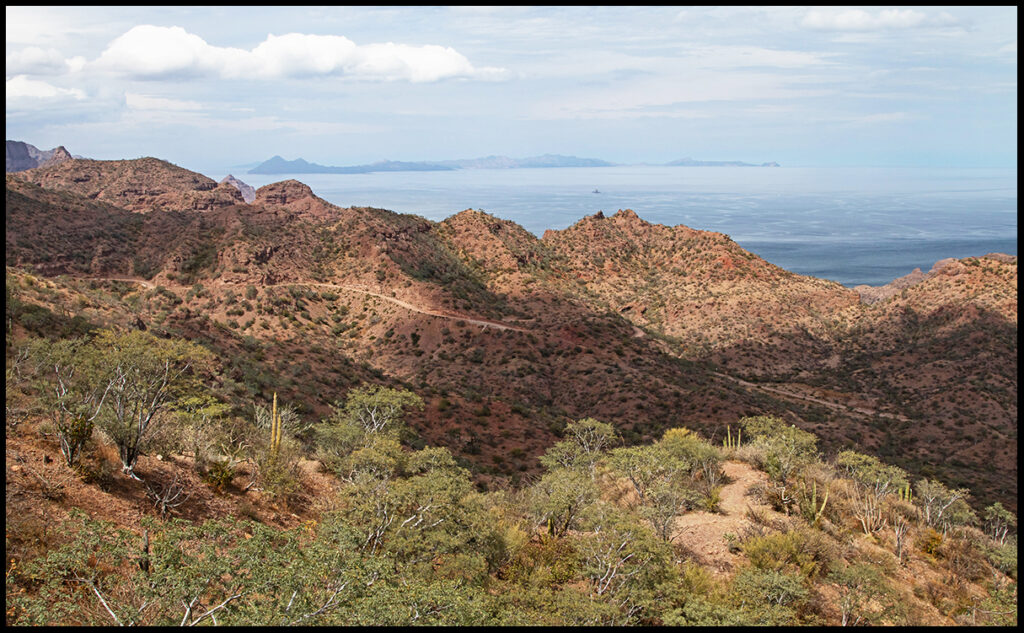
The road in after the steep part.

The Sierra la Gigante (huge mountains) crashes into the gulf.
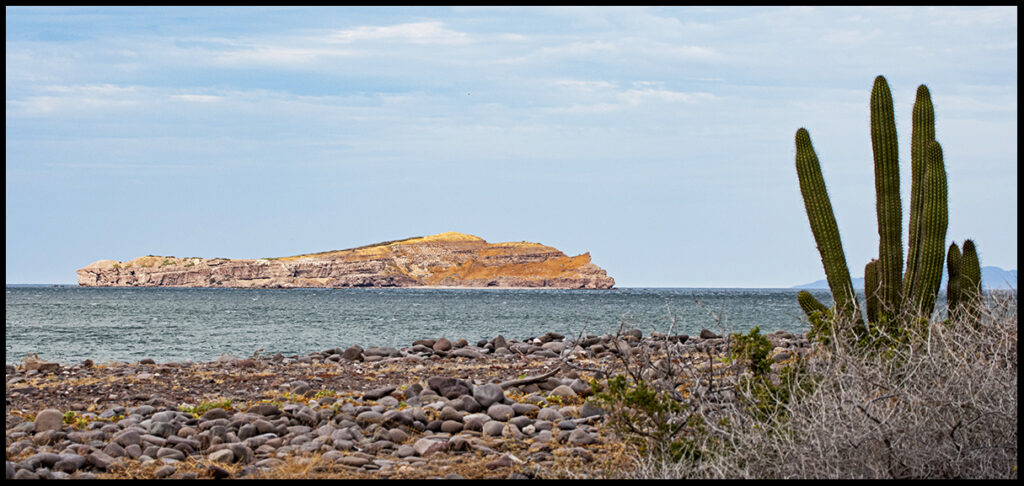
Camp view, not the sandy beaches most tourists seek.
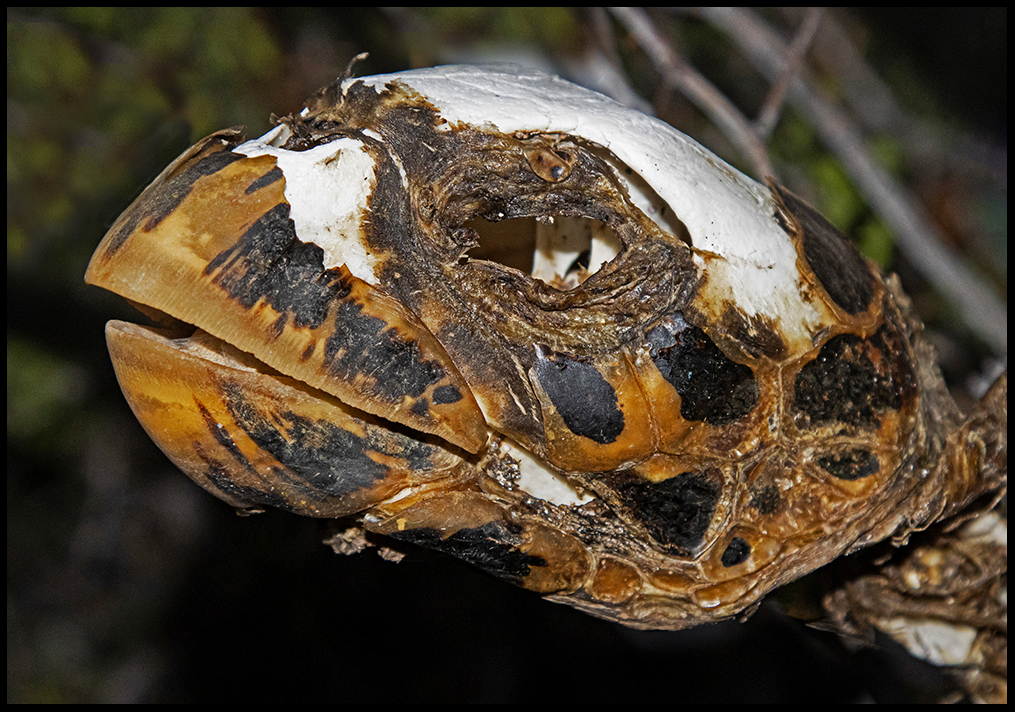
There were a couple of creepy skeletons in a tree. This one a young sea turtle.

Parrotfish skeleton. I wish the weather had been more encouraging for snorkeling in order to see parrot fish alive. But it was not to be.
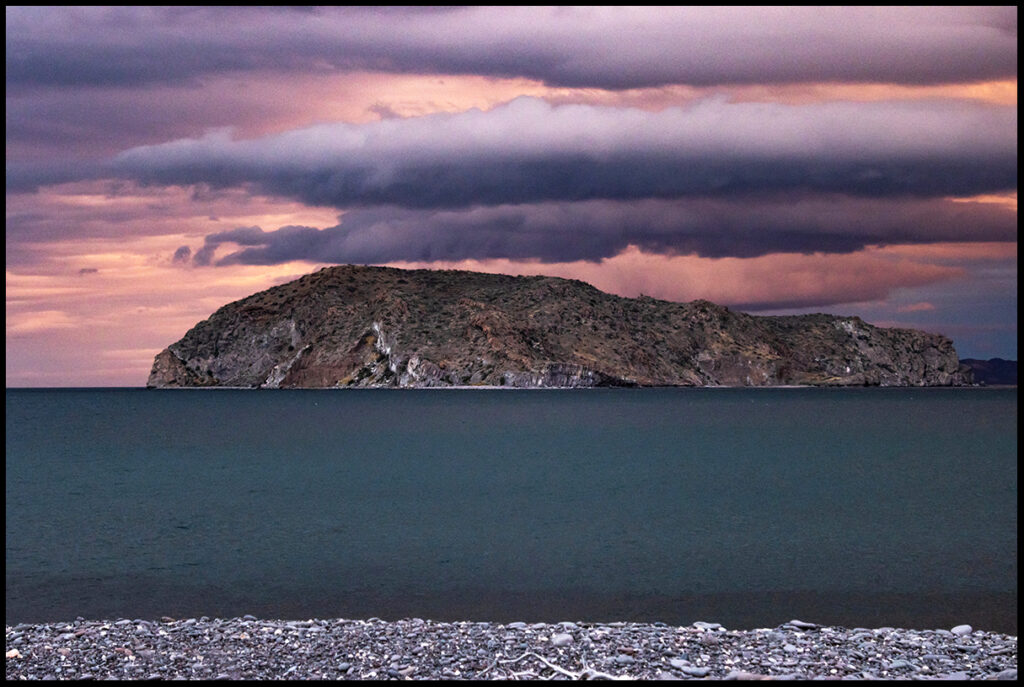
Camp: evening view. Weather stayed cool and overcast.
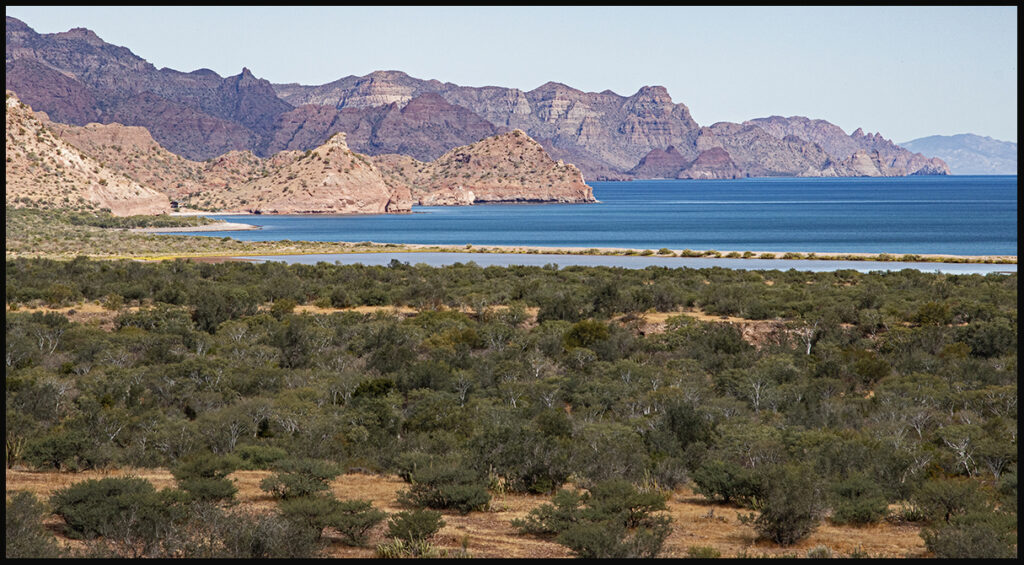
In the morning we tried to drive out to the port itself, but the road was too rough for Craig’s sore neck.
On the way in, we noticed a place called Agua Ultima (last water). It was a little oasis with a dam on a small river with real water in it. Not a frequent sight. On the way out the sun was shining so we stopped to enjoy.

And there were several kinds of dragonflies, this one a Flame Skimmer.

Acacias were in full, fragrant bloom.

Even in the most unlikely spots one finds virgin shrines.

The oasis at Agua Ultima, and the end of Chapter 1. Little video of ibis follows.

